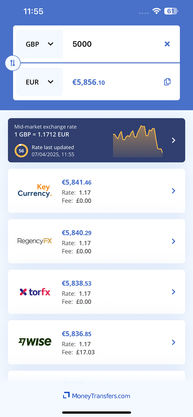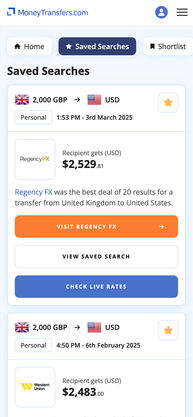What is a BACS payment?
In the UK, bank transfers from one bank account to another can take different forms, with the common methods being Faster Payments, CHAPS, and Bacs. Of the three, Bacs is the most popular and often used for Direct Debits and Direct Credit payments.
But, what is a Bacs Payment? In this guide, we look into Bacs, what it stands for, when they are used, the different types of Bacs payments, transfer speeds, and costs involved. We’ll also cover how to make a Bacs payment and everything else you need to know about this payment system.
BACS payments are UK-based bank transfers primarily used for Direct Debit and Direct Credit, often for payroll, pensions, and supplier payments. They’re cost-effective, with low fees, but take up to 3 days to process, making them unsuitable for urgent transfers.
What is a Bacs Payment?
Bacs is a regulated payment system used by businesses in the UK to move money electronically from one bank account to another domestically.
Bacs payments can either be made by Direct Debit or Direct Credit. In a Direct Debit arrangement, the payer having been notified in advance of the amounts to be withdrawn and the dates, instructs their bank to allow the beneficiary organisation to collect varying amounts from the paying account.
In a Direct Credit payment scheme, the payer instructs their payment service provider (PSP) to debit their account and directly credit the beneficiary’s account.
If you're interested in domestic transfers, have a look at our domestic wire transfer guides.
What Does Bacs Stand for?
Bacs is an abbreviation for Bacs Payment Schemes Limited. The Bacs payment scheme is managed and run by Bacs Payment Schemes Limited, a 16-member private limited company incorporated in the UK in 2003.
The company supports Direct Debit Scheme, Bacs Direct Credit Scheme, Cash ISA Transfer Service, as well as the clearing and settlement of funds. In 2018, Bacs celebrated its 50th anniversary, and the system has so far processed over 6.44 billion transactions amounting to more than £4.96 trillion.
When Are Bacs Payments Used?
Bacs payments are predominantly used by UK businesses, both large and small, to pay suppliers and employees’ wages and salaries. Having said that, most regular payments, including on-off transfers, are also settled via Bacs. Here are a few examples of common Bacs payments.
Pension payments
Employee reimbursements
Insurance policy payments
Dividend disbursements
Subscriptions and memberships
Charitable donations
Which UK Banks Facilitate Bacs Payments?
The following banks and financial institutions are participants of the Bacs Payment Schemes Limited:
Allied Irish Bank
Atom bank
Bank of England
Bank of Scotland PLC
Barclays Bank PLC
Barclays Bank UK PLC
Citibank NA
ClearBank®
Clydesdale Bank PLC
Coutts & Co
HSBC Bank PLC
HSBC UK Bank PLC
Lloyds Bank PLC
Metro Bank
Modulr
Nationwide Building Society
NatWest
Northern Bank
PayrNet
Santander
Starling Bank
The Access Bank UK
The Co-operative Bank
The Royal Bank of Scotland
TSB
Turkish Bank UK
Virgin Money
Pros and Cons of Bacs Payments
Bacs is a popular payment system, but certainly not the only one available for transferring money. Here is a summary of its pros and cons to help you decide whether or not it is the right option to help you transfer your funds.
Pros
Cons
How Long Do Bacs Payments Take?
One of the most common questions about Bacs payments is how long do Bacs payments take. Well, Bacs payments take 3 working days to clear. On the first day, the payment instructions are submitted to the Bacs system and the second day is reserved for bank processing. On the third day, the payment is debited from the sender's account and credited to the recipient’s account.
Alternatively, take a look at our guide on how long do international bank transfers take, if you're interested in international bank transfers.
How Much Do Bacs Payments Cost?
Making payments via Bacs is considered one of the cheapest options on a per transaction basis compared to the wire transfer fees. However, other fees should be factored in depending on whether the payments are made through a bank or a Bacs approved bureau. Here are the costs to expect.
Set Up Fees
To make Bacs payments, you must first be set up on the system. If you choose to be set up for Direct Access via bank, you’ll have to invest in staff training, pay for Bacs-approved software, and also pay an initial set up fee that can run into thousands of pounds - upwards of £5,000 . This option is for large organisations with huge volumes of recurring payments.
Alternatively, you can be set up to access Bacs payments via a Direct Debit bureau. The bureau which essentially is a third-party organisation saves you the burden of handling Bacs payments in-house. The initial set up fee for this arrangement is between £400-£500.
Transaction Fees
After the one-off initial set up, every payment you make incurs transaction fees. Banks charge anywhere from £0.05-£0.50 in transaction fees while BABs charge £0.20-£0.50 per transaction. The higher the volume of transactions, the higher the transaction fees.
Additional Fees
Aside from the setup and transaction costs, there are additional fees including monthly fees, submission fees, penalty fees and mandate fees. Most of these fees also vary based on the volume of transactions, type of bank and whether there are payment cancellations and recalls.
How Do Bacs Payments Work?
Payment is Made
Payment Processed by Bank
Payment Processed by Debit/credit Card
Funds Are Sent
The Different Types of Bacs Payment
Bacs payment schemes can be categorised into two categories: Direct Debit and Direct Credit. Let’s briefly look at what they are and the differences between them.
Direct Debit
This is a scheme where a customer pays regular or occasional amounts to an organisation at specified dates by giving advance notice to their bank to allow the organisation to pull or collect the payments directly from their account. The customer instructions are contained in a document called a Direct Debit Mandate form that stays with their bank. Direct Debit payments account for over £4.5 billion annually in transaction volume.
Bacs Direct Credit
This payment scheme provides a simple and secure way of making and receiving payments directly into the beneficiary’s bank account. Currently, over 150,000 organisations use the Bacs Direct Credit system. If you want to know more about safe bank transfers, check our guide: are bank transfers safe?
Depending on the nature of payments you want to make, you can opt for a Direct Debit payment arrangement or a Bacs Direct Credit payment scheme.
What Other Types of Bank Transfers Are There?
Even though Bacs is the most common payment arrangement, it is not the only electronic payment system available. As alluded to earlier in this guide, you can also consider using CHAPS and Faster Payments. Here is a summary of what is involved when using these payment methods.
CHAPS
CHAPS stands for Clearing House Automated Payment System. It is an electronic payment system that facilitates bank-to-bank transfers within the UK. Unlike Bacs payments, the CHAPS system delivers payments the same day on condition that the instructions are received by the cut off time of 2pm.
This payment system is designed to handle high-value transfers such as property purchases and foreign exchange settlements. The scheme is currently being used by more than 5,000 financial institutions, including banks, and the cost per transaction varies between £25 and £30.
Faster Payments
Introduced in the UK in 2008, Faster Payments is a payment scheme that takes less than 2 hours to complete. It is owned and managed by Faster Payments Scheme Limited - a membership organisation similar to Bacs Payment Schemes Limited.
Transfers are capped at £250,000 per transaction and only participating banks can facilitate Faster Payments. At the moment, the scheme consists of 10 banks and building societies as the participating organisations. Typically, Faster Payments is used for small value transfers and supports mobile payments as well.
More Bank Transfer Guides
What Information Will You Need to Make a Bacs Payment?
Like many other types of money transfers, to make a Bacs payment you will need:
The recipient’s full name
The name of the recipient’s bank
The recipient’s account number and sort code
How to Make a Bacs Payment?
You can make a Bacs payment through a bank - also known as direct access method - or through a bureau - commonly referred to as the traditional direct debit method.
How to Make a Bacs Payment Through a Bank
1. Apply for a Service User Number (SUN): The application will be reviewed by the bank to ensure it satisfies the conditions set by the Direct Debit scheme. Approvals can take months.
2. Build Technical in-house Expertise: Since the direct debit collections will be managed in-house, you must have a technically competent team that collects, stores and submits payment information to the Bacs system. Part of the resources needed to run the system is Direct Debit management software.
3. Submit Your Payment Data: Once you’ve captured the beneficiary’s name, account number, sort code and the amount to be paid, you can submit the payment to Bacs. Remember to include the payment reference to help the recipient identify what the payment is for.
Transfer Through Bacs Approved Bureaus
1. Get a Service User Number: The bureau can either use a SUN specially set up for you or manage the submission and payments as an agent on your behalf using its SUN.
2. Prepare the Excel Submission File: The file typically captures the payee names, their account numbers, sort codes, amounts and payment references.
3. Submit the File: You can email or directly upload the file to your bureau. The bureau will then handle the rest of the submission to Bacs and email you back with any failed payments so you can check and re-upload.
It is important to note that bureaus charge for failed payments. Therefore, ensure your payment instructions are clear and accurate.
Bottom Line: What is Bacs?
Bacs is a popular electronic payment system in the UK that allows businesses to transfer funds from one bank to another, or to receive money from elsewhere. The main payment schemes under Bacs are the Direct Debit scheme and the Bacs Direct Credit scheme.
The Direct Debit scheme allows an organisation to pull or collect payments from the sender’s account while the Direct Credit scheme allows a sender to push payments directly to payees’ bank accounts.
Businesses use Bacs for making regular and occasional payments such as supplier payments, wages and salaries, pensions, dividend payments and so forth. Generally, the Bacs payment system is time-efficient, cost-effective, safe, and guaranteed by the Direct Debit Guarantee scheme.
That notwithstanding, Bacs payments are often slow and can take up to 3 working days to complete. If you want to make urgent transfers that don’t require steep set up costs or special software, you could look at specialist money transfer services or virtual banks. Other payment systems such as Faster Payments and CHAPS are also fast but are often costly and may not be universally available.
Other Ways to Send Money
Related Content
Contributors




